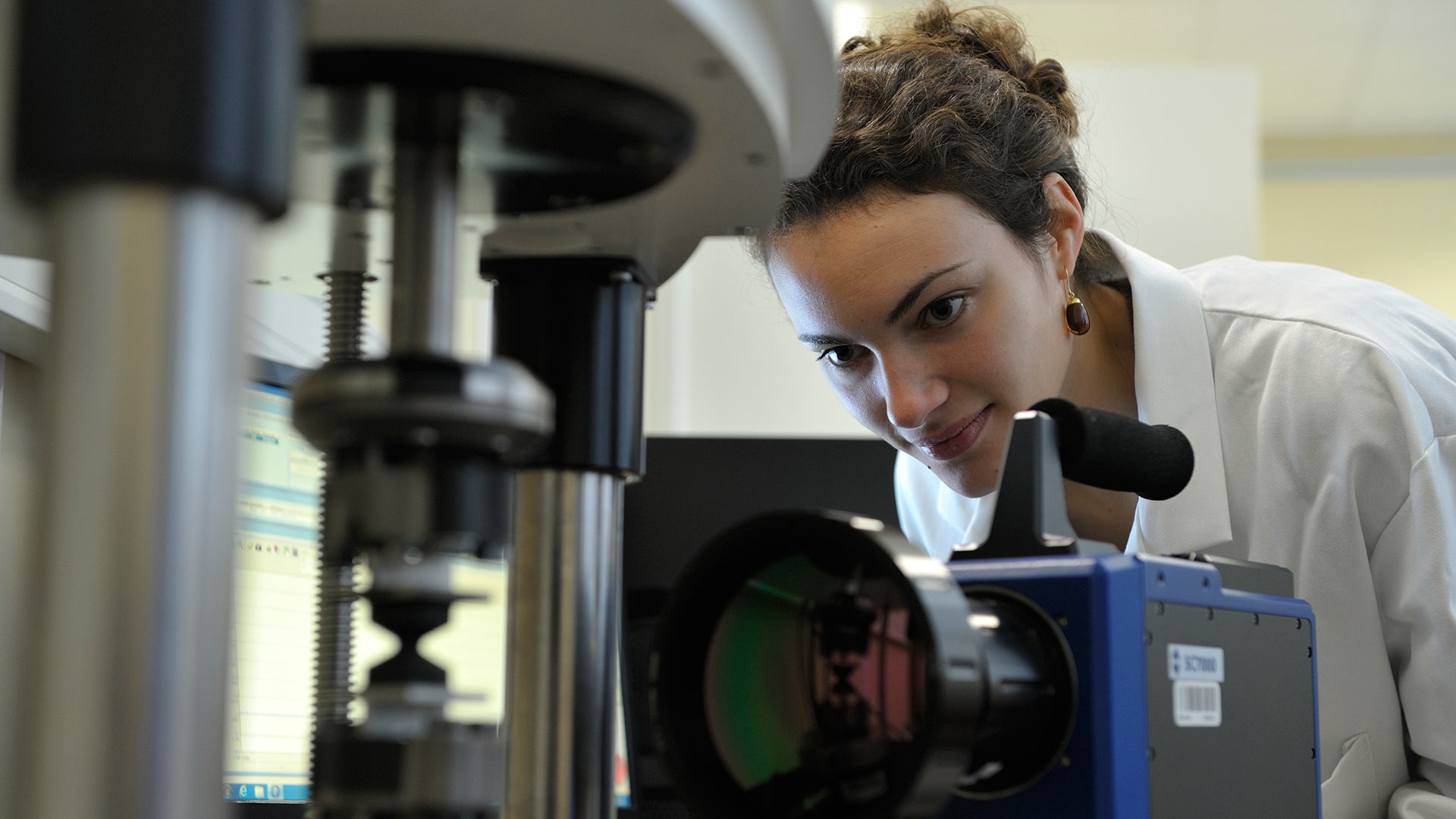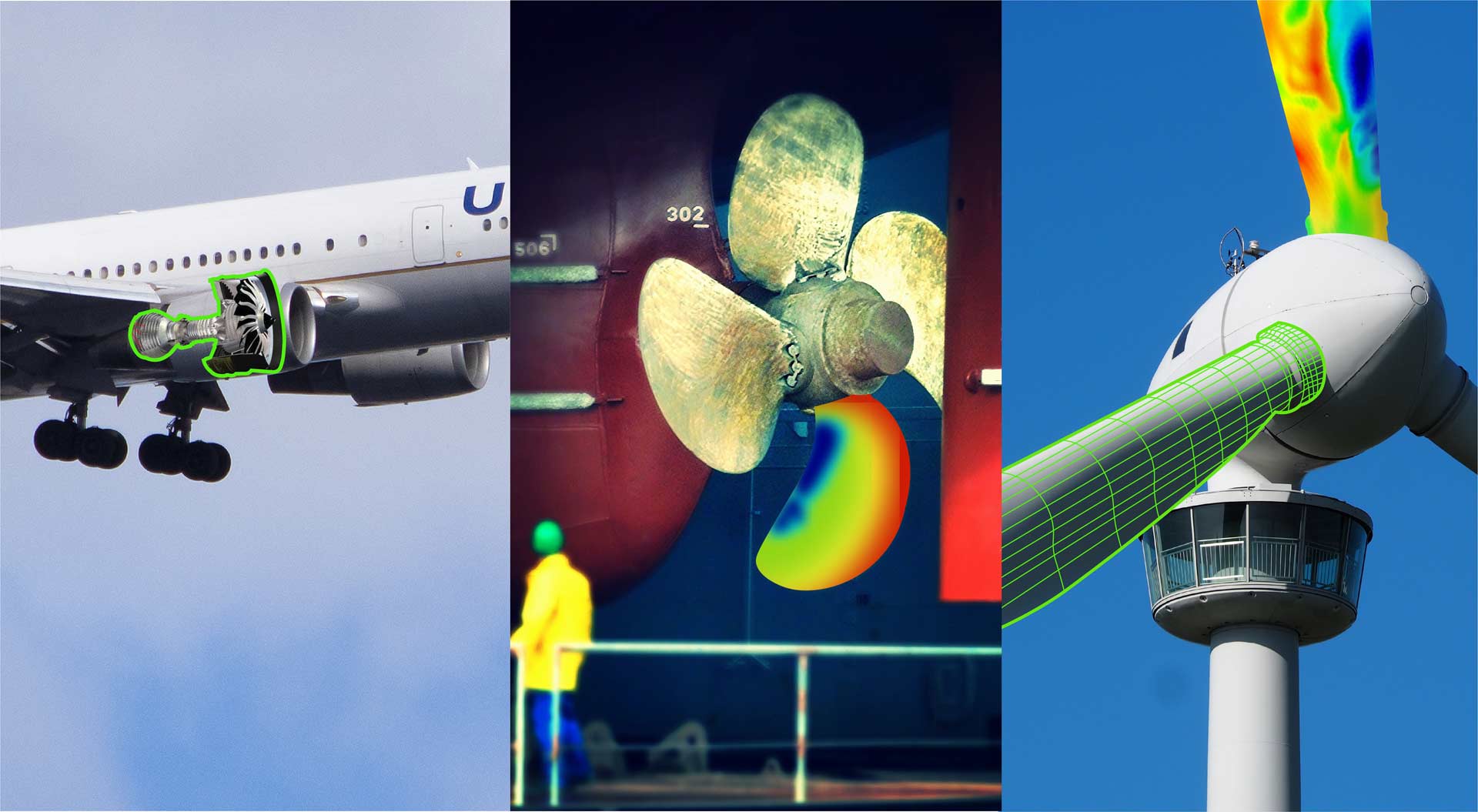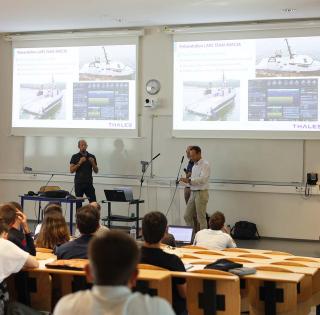
Train multidisciplinary expert engineers for civil and defense applications (marine, aviation, automotive, energy, etc.) and R&D engineers capable of meeting the challenges of modeling complex multi-material structures (composites, metals, elastomers, etc.).
• Experimental characterization and multiscale materials modeling (Metallic materials and additive manufacturing, Composites and nanocomposites, Elastomers)
• Digital simulation of complex multiphysics phenomena (Thermal phenomena, Thermodynamics, Dynamics, Shock, Vibrations, Buckling)
• Durability of materials and structures (Fatigue life, Aging, Corrosion)
• Mathematical tools for modeling and optimization

Industry-leading training
In close partnership with the CNRS Joint Research Center, the program focuses on:
- Predicting and modeling the behavior of all types of materials and structures,
- Designing and optimizing mechanical systems to make them more reliable (impact resistance, durability), lighter, less expensive and more environment-friendly.
Companies need to understand the structure, behavior, aging, etc. of steels, light alloys, elastomers, composites, biomaterials and the mechanical systems they belong to. Such expertise is relevant to the complete lifecycle of industrial parts, from manufacturing to maintenance to the end-of-life stage.
Graduates have strong expertise in the characterization, modeling and simulation of the behavior of materials and structures (failure of materials and structures, behavior law formulation, nonlinear phenomena simulation, explicit dynamics, etc.).
With such expertise, students can go on to work for engineering firms, advanced simulation departments and R&D offices.
A double degree
This major is linked to a Research Master’s degree that allows students to earn a double degree (engineering degree and Master of Science). Graduates can then pursue an international career and/or an engineering doctorate (thesis relating to materials and structural calculations).
| Target Careers | Activity Sectors |
|---|---|
|
|
Examples of end-of-study projects by students majoring in Advanced Modeling of Materials and Structures
- Modeling of nonlinear vibrations in a bolted assembly with unilateral contact
- Modeling study for injected short-fiber composite materials
- Modeling of a rocket’s rolling in ballistic phase
- Study of shape-memory alloys
- Proposal of new development and size calculation methods, including prediction of vibration behavior
- Study of fatigue in various aeronautical metallic materials obtained by additive manufacturing






















